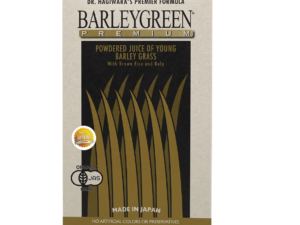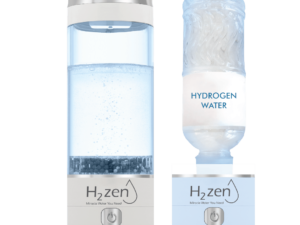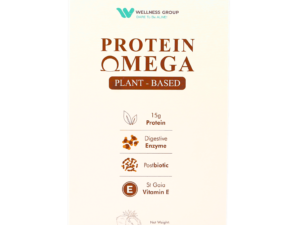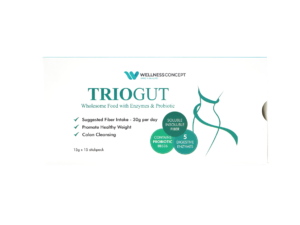Did you know 90% of Malaysians consume less than the recommended daily intake of essential nutrients for digestive health? Poor eating habits and processed foods can disrupt the body’s natural cleansing process, leading to sluggish digestion and low energy levels.
The Wellness Group specializes in helping individuals improve their well-being through science-backed strategies. Unlike risky detox trends, a balanced diet rich in natural ingredients supports long-term health. Their experts are available via WhatsApp at +60123822655 from 9:30 AM to 6:30 PM on weekdays and 10 AM to 5 PM on weekends.

Click to LEARN MORE
Research shows that simple dietary adjustments can enhance toxin removal without extreme measures. Common local foods like fruits and whole grains make it easy to boost nutrient intake. For more tips, explore natural daily detox methods.
Key Takeaways
- Most Malaysians lack sufficient nutrients for optimal digestion.
- Wellness Group offers expert guidance on gut health (WhatsApp: +60123822655).
- Modern diets often contribute to toxin buildup.
- Fiber-rich foods support the body’s natural detox process.
- Quick-fix detox myths can be harmful.
Why Fiber Is Essential for a Healthy Gut
Healthy digestion starts with what many Malaysians aren’t consuming enough of. Modern diets, heavy in processed foods, provide just 15g of nutrients crucial for intestinal function—far below the recommended 25–38g daily. This gap disrupts the gut microbiome, often called the body’s “second brain” for its role in immunity and metabolism.
The Science Behind Fiber and Digestion
Undigested fiber becomes fuel for beneficial bacteria, producing short-chain fatty acids (SCFAs) that strengthen the gut lining. A 2017 study found high-fiber diets boost microbial diversity by 40%, enhancing nutrient absorption. For example, Tanzania’s Hazda tribe consumes 100g daily, showcasing near-zero inflammation rates.
In contrast, low intake starves good bacteria, thinning the mucus barrier. This triggers “leaky gut,” where toxins seep into the bloodstream. Urban diets exacerbate this, correlating with rising IBS cases in Malaysia.
How Toxins Accumulate Without Enough Fiber
Like a clogged drain, sluggish digestion traps waste. Insoluble fiber acts as a broom, sweeping debris through the intestines. Without it, toxins linger, straining the liver and kidneys. Processed foods worsen this by stripping natural fiber.
Immediate fixes? Swap white rice for brown, or snacks for nuts. Regular bowel movements and reduced bloating often follow within days—proof that small changes yield big benefits.
How Fiber Supports Gut Detoxification
Many people overlook the powerful role of dietary fiber in maintaining a healthy digestive system. It works in two distinct ways—mechanically and chemically—to keep the intestines clean and toxin-free. By understanding these processes, Malaysians can make smarter food choices for better digestion.

Insoluble Fiber: Nature’s Broom for Your Intestines
Think of insoluble fiber as a scrub brush for the digestive tract. Found in whole wheat, brown rice, and vegetables, it adds bulk to stool and speeds up waste removal. A 2018 study showed that diets rich in insoluble fiber reduce colon transit time from 72 hours to just 14 hours.
Swapping white rice for brown rice is an easy local example. The extra fiber helps sweep away toxins before they can cause harm. This simple change can lead to fewer digestive issues and more energy.
Soluble Fiber: The Toxin-Binding Gel
Unlike its rough counterpart, soluble fiber dissolves in water to form a gel-like substance. Oats, apples, and bananas—common in Malaysian diets—are excellent sources. This gel binds to bile acids, which often carry environmental toxins, and flushes them out.
“Soluble fiber acts like a sponge, soaking up harmful substances before they enter the bloodstream.”
Research confirms that adequate soluble fiber intake increases toxin excretion by 30%. It also helps lower cholesterol by trapping excess fats.
The Role of Gut Bacteria in Breaking Down Fiber
Beneficial bacteria, like Bifidobacterium, thrive on fiber. They ferment soluble fiber into short-chain fatty acids (SCFAs), which strengthen the gut lining. A healthy microbiome also boosts immunity and improves nutrient absorption.
Resistant starches, found in slightly green bananas, feed these good bacteria. While supplements like psyllium husk can help, whole foods provide additional nutrients for balanced digestion.
| Type of Fiber | Primary Sources | Key Benefits |
|---|---|---|
| Insoluble | Brown rice, whole wheat | Speeds waste removal, prevents toxin buildup |
| Soluble | Oats, apples, bananas | Binds toxins, lowers cholesterol |
For optimal digestion, a mix of both types works best. Malaysian staples like oats and lentils make it easy to get enough fiber naturally.
Top High-Fiber Foods to Incorporate Daily
Boosting daily nutrient intake doesn’t require drastic changes. Simple swaps with Malaysian-friendly foods can significantly enhance digestion and energy levels. From local favorites to globally recognized superfoods, here’s how to upgrade meals effortlessly.
Whole Grains and Legumes for Sustained Energy
Brown rice and lentils are staples that pack a nutritional punch. One cup of cooked lentils delivers 16g of fiber—half the daily requirement. They also increase microbial diversity by 20%, according to gut health studies.
Local adaptations like adding lentils to curry or swapping white rice for brown rice make transitions easy. Soaking legumes overnight reduces cooking time and improves nutrient absorption.
Fruits and Vegetables with the Highest Fiber Content
Apples and pears with skins intact provide 4-5g of fiber each. Local options like cempedak and petai offer unique flavors while supporting digestion. Sweet potatoes, with 4g per medium tuber, are versatile for roasting or mashing.
“Eating the skin of fruits and vegetables can double your fiber intake from these sources.”
Broccoli and cabbage aren’t just side dishes—they’re fiber powerhouses with cancer-fighting compounds. A cup of chopped cabbage provides 2g of fiber with only 22 calories.
Nuts and Seeds as Easy Fiber Boosters
Chia seeds lead the pack with 10g per ounce. Just two tablespoons in teh tarik or oatmeal create a gel-like texture that aids digestion. Almonds and peanuts offer 3-4g per handful, perfect for on-the-go snacks.
Flaxseeds, though small, deliver 3g per tablespoon. Grinding them releases more nutrients for smoothies or yogurt toppings.
| Food | Serving Size | Fiber (g) |
|---|---|---|
| Red beans | 1 cup cooked | 16 |
| Chia seeds | 2 tbsp | 10 |
| Pear (with skin) | 1 medium | 5.5 |
| Almonds | 1 oz (23 nuts) | 3.5 |
| Air popiah | 1 roll | 5 |
For meal inspiration, explore this 7-day high-fiber meal plan that balances taste and nutrition. Start gradually—adding just one high-fiber item daily prevents bloating while improving gut health over time.
Practical Tips to Increase Your Fiber Intake
Small changes in daily meals can make a big difference in digestive health. Swapping processed foods for whole, nutrient-rich options is easier than many think. Start with breakfast—overnight oats with chia seeds or whole-grain toast with avocado add 5–7g of fiber instantly.

Simple Swaps for Processed Foods
Replace white rice with brown rice or quinoa for double the fiber intake. Snack on roasted almonds instead of chips—a handful delivers 3.5g. Soaking beans overnight cuts cooking time and enhances digestibility.
At restaurants, request “tambah sayur” (extra vegetables) or opt for whole-grain noodles. A Penang family shared how these swaps reduced bloating within weeks.
Meal Planning with Fiber in Mind
Pre-cut veggie sticks and washed berries in clear containers encourage healthy snacking. A 7-day Malaysian meal plan hitting 30g daily might include:
- Monday: Lentil curry with brown rice (12g)
- Wednesday: Stir-fried broccoli with tofu and quinoa (10g)
- Friday: Air popiah with peanut sauce (5g)
“Meal prepping saves 3–4 hours weekly while ensuring consistent diet quality.”
Hydration is key—drink one glass of water per 5g of fiber to prevent discomfort. Seasonal vegetables like kangkung (water spinach) are affordable and nutrient-dense.
Common Myths About Fiber and Detoxification
Misinformation about digestive health spreads faster than facts. Many trendy detox methods promise rapid results but fail to deliver long-term benefits. Understanding the science helps separate truth from hype.
Debunking the “Quick Cleanse” Misconception
Juice fasts and 3-day cleanses often lack insoluble fiber, leaving toxins trapped. A 2021 study found participants on a 7-day fiber-rich diet maintained weight loss better than those on juice cleanses. Their microbiome diversity also improved by 30%.
Detox teas with senna or laxatives pose risks. Overuse thins the gut lining and creates dependency. One Malaysian clinic reported cases where these teas worsened constipation after initial relief.
“The body detoxifies naturally when given the right nutrients—not harsh shortcuts.”
Why Supplements Can’t Replace Whole Foods
Powdered supplements miss the synergy of phytonutrients in whole foods. For example, oats contain beta-glucans that work with bacteria to reduce inflammation—a combo pills can’t replicate.
Financial costs add up too. Annual spending on fiber pills averages RM500, while lentils and brown rice cost half that. Unregulated detox products in Malaysian markets may also lack safety testing.
- Doctor consultation is key for chronic issues. Self-prescribing high-dose supplements can disrupt electrolyte levels.
- Introduce fiber slowly to avoid bloating. Start with 5g daily from fruits or nuts.
Real food supports the gut’s natural processes without risky side effects. For personalized advice, always consult a doctor before overhauling your diet.
Conclusion
Small, consistent changes in diet create lasting benefits for overall health. Unlike quick cleanses, daily fiber-rich meals support natural toxin removal and energy levels.
Start with simple swaps—brown rice, nuts, or extra vegetables. Track intake for three days to identify gaps. The Wellness Group’s nutritionists can help tailor a sustainable plan via WhatsApp at +60123822655 (Weekdays: 9:30 AM–6:30 PM, Weekends: 10 AM–5 PM).
Long-term habits matter more than short fixes. A handful of mixed nuts daily meets half the fiber target while boosting immunity. Food truly is the best medicine.
FAQ
Why is fiber important for gut health?
It helps digestion by moving waste through the intestines and feeds beneficial bacteria, which support overall wellness.
What happens if someone doesn’t get enough fiber?
Toxins may build up, digestion slows, and harmful bacteria can overgrow, leading to bloating or discomfort.
How does insoluble fiber help with detoxification?
It acts like a broom, sweeping waste through the digestive tract to prevent buildup and promote regularity.
What foods are the best sources of soluble fiber?
Oats, apples, beans, and flaxseeds form a gel-like substance that binds toxins and helps remove them from the body.
Can fiber supplements replace whole foods?
While they help, whole foods provide additional nutrients and work better with gut bacteria for long-term benefits.
How can someone easily add more fiber to their diet?
Swap white bread for whole grains, snack on nuts, and include veggies like broccoli or carrots in meals.
What’s a common myth about fiber and detoxing?
Many think quick cleanses work, but consistent high-fiber meals are more effective for lasting gut health.






